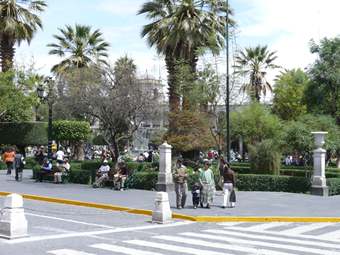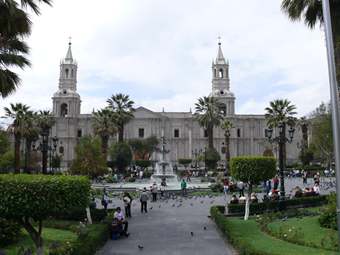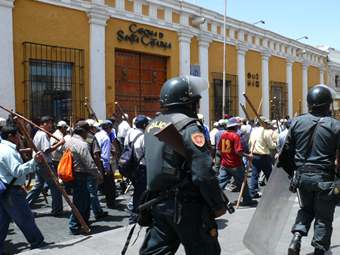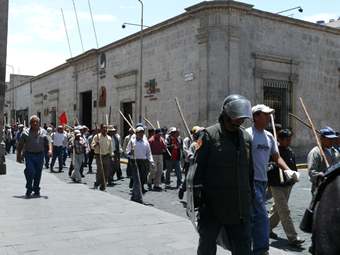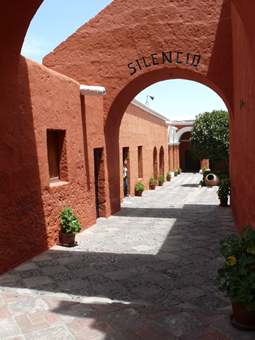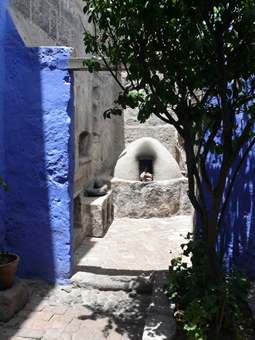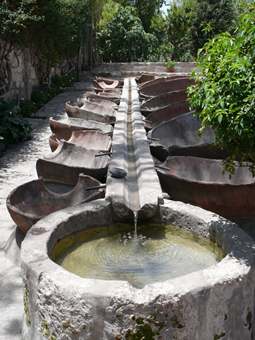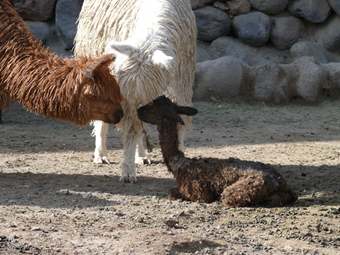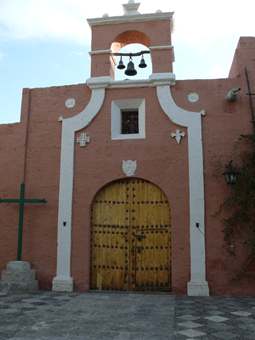AREQUIPA, Colonial City

|
I am beginning to run
out adjectives to describe this
extraordinary beautiful land; arid, barren and unfriendly to human habitation,
the desert squeezed between the Andes and the Pacific is the most unlikely place
for people to live . After an 8 hr. bus ride we
arrived in Arequipa, 2500 mts above sea level. It is the second most important
Peruvian City adorned with colonial churches, mansions and a beautiful convent
with stunning backdrop provided by the volcanoes, which dominate the skyline.
The Arequipans feel superior to the Limans and resent the idea of the nation
revolving around Lima. We, in fact, think the Plaza de Armas is more beautiful
than Lima’s Plaza Mayor.
We happened to be in Arequipa on a day of National
strikes. People were demonstrating all over Peru, armed with staves, for higher wages for
doctors. Santa
Catalina Convent is a complete miniature walled colonial town, within a city. It
was founded in 1579. It is built from local white volcanic stone. It is
considered the most important and prestigious religious building in Peru. It was
the home for 200 Nuns from all walks of life. Only 40 are living there to
day.
City within a city, with accommodation for the nuns
complete with servants’ quarters and kitchen
Vaulted cloisters
Smart laundry! We are becoming true tourists and City Tours are the norm
in our schedule Next on the agenda was an Alpaca factory. There are 4
types of cameliad in South America. The Vicunas the best and most expensive wool
(US$ 400 a kilo), next the alpaca long and short hair, is now domesticated and
we have tasted its meat (nothing exciting) The Lama is a working animal carrying
loads of 45 kilos. (Baby Lama’s hair is very expensive, only 200 grms. Harvested
per year) the 4th one we can’t remember the name is of not much
use.
We visited Arequipa Founder’s mansion. It has had a very
chequered history but is now in private ownership and is used as a wedding
venue. It was rebuilt after various earthquakes.
Mexico and the setting for the film Zoro, it must be the
Spanish influence! Back to the Plaza at night, it was all so prettily
lit. |
